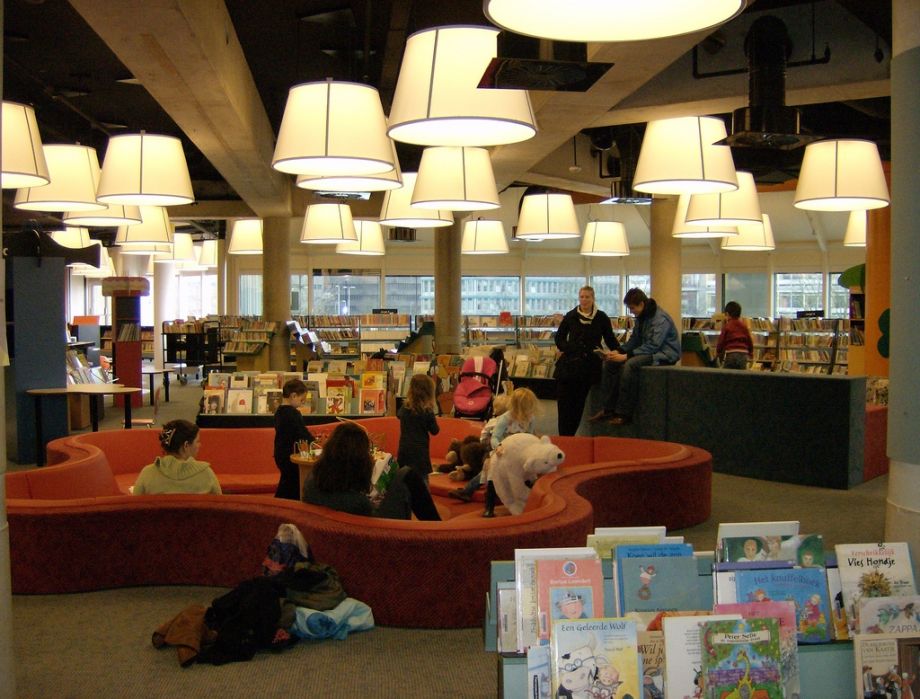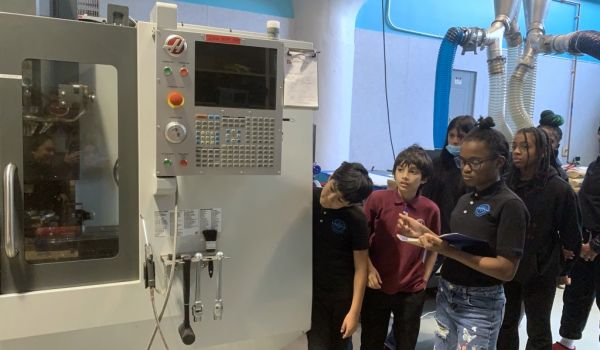When it comes time for parents in Rotterdam to choose where to send their children for elementary school, there’s a lot to consider. The school should be close by, within easy biking distance. It should have a good mix of children from diverse backgrounds and a nice outdoor play area. And in the back of their minds, there is always the expectation that the school have a good performance record for the standardized, nationally required CITO test.
In Rotterdam, this is can be a problematic set of expectations for parents. Compared to other large cities in the Netherlands, Rotterdam consistently ranks lowest on the national CITO scores. No one is happy about this. In the recently published evaluation report, “The State of Education in Rotterdam 2013” (Staat van het Rotterdams Onderwijs 2013) the city’s CITO average of 531.8 is considerably lower than the national average of 536, while schools in Rotterdam South, an area associated with poverty, crime and heavily immigrant communities rank—unsurprisingly—even lower.
Originally based on the American standardized testing model, the CITO test is required for all students around the age of 12 and evaluates different competencies using a set of multiple-choice questions. The test takes a few hours to complete and in the run-up to the big day students spend hours brushing up on their math and language skills. Although there has been discussion about the validity of testing students at such an early age, most parents seem to anticipate the exam with a mixture of dread and excitement, especially since the results will decide which scholastic route that student embarks on, whether it be toward a university, a technical school, or a practical apprenticeship of some kind.
The Dutch education system is complicated, with various alternatives available to ambitious learners, but a simple explanation would be that the CITO score is used to determine whether the 12-year-old student will go on to VMBO (a four-year education), HAVO (five years) or VWO (six years). The VMBO trajectory generally leads to an apprenticeship or training, and ultimately, a practical career such as an auto mechanic or chef. A successful HAVO student usually attends HBO after graduation: an education similar to an American community college. For VWO graduates, the next step is generally university.
In a recent analysis of Rotterdam’s education-related challenges, Esther Audier and Caterine Baeten wrote, “This educational problem cannot be separated from Rotterdam’s social demographics. Two-thirds of the Rotterdam youth grow up in families that are not ethnically Dutch and where little or no Dutch is spoken at home. One out of three students grows up in a family with poorly educated parents, from which only a few students are able to reach higher forms of education and certainly not everyone is able to get a start qualification for the work market.”
To address these problems, the municipality of Rotterdam developed the educational reform program “Better Performance 2011-2014” (Beter Presteren 2011-2014). The goals of the program were clear and quantifiable: the municipality wanted better test results and a reduction in the number of student dropouts. Unfortunately, the program’s heavy focus on math and language left schools with the same complaints that, for many educators, are all too familiar: it encourages schools to “teach to the test,” leaving few resources for art, music, or other so-called extras. To the critics, it’s these extras that provide the real education. These are the areas students get excited about, and when they are sacrificed in the name of test performance, chronic problems like high dropout rates and short attention spans get worse. In Rotterdam South, these issues are already acute: almost of a quarter of all students leave school before receiving a diploma.
It sounds bleak. Where city officials and exhausted educators have failed, however, creative ideas seem to be emerging from unlikely sources. With his relaxed manner and gray hair pulled back in a ponytail, philosopher Henk Oosterling makes an implausible hero. But for the Bloemhof elementary school in Rotterdam South, a plan developed with Oosterling has given the school and its 315 students a second chance. At the Bloemhof school, 56 percent of the students are from a non-Dutch background, a statistic that has implications for delayed Dutch language development and socio-cultural complications. 62 percent of the students come from families that are considered “at risk” or “disadvantaged.” For hard-knock Rotterdam South, none of these challenges are especially notable. In fact, quantifiably, the Bloemhof School is exceptionally average. Except for one factor: in 2013, Bloemhof students scored an average of 530.7 on the CITO test. Comparable schools in the area scored a full two points lower, at an average of 528.3.
Why this difference? For Bloemhof school director Wim Pak, the answer is clear. The educational model developed with Oosterling has had a profound effect on both students and the surrounding community. The program began by incorporating judo lessons for the students. The benefits of the martial arts training, as explained by Pak, include an increased respect for each other as well as physical exertion. The school garden, another element of Oosterling’s plan, allows children to participate in the production of food and creates a deeper understanding of natural processes. The oldest children receive philosophy courses. There is also a strong focus on the arts, with dance, theater and visual art classes available on Thursday afternoons. Oosterling has called this model “combat against cynicism.”
The pragmatic, political-philosophical approach introduces themes such as quality of life and sustainability, but also grapples with the realities of life in this poverty-stricken neighborhood. One of the most basic innovations for students was the inclusion of a warm meal for lunch everyday that often includes vegetables from the garden that the children have grown themselves. According to teachers, the increase in the students’ concentration levels since the introduction of the warm lunch has been enormous. To compliment the relationship between the garden and the school, children also receive cooking lessons and learn about recipes from different cultures—sometimes from their own ethnic backgrounds. This leads back to the school’s central, ongoing discussion about respect for people and their differences.
The school has had a ripple-effect on the community. More than 40 local mothers volunteer in the Bloemhof kitchen, preparing the warm lunches. These mothers are often of Moroccan or Turkish origin and the volunteer hours provide them with the opportunity and motivation to improve their Dutch language skills. Bloemhof now forms a kind of satellite for this area: the school’s focus on respect and heavy involvement with the parents has enabled transformation in a neighborhood that was once known as a “problem area.”
While the hard numbers for Rotterdam have improved a bit as a result of the Better Performance plan, the critique of this program has been clear: it focuses too heavily on measurable results, at the cost of students’ social and cultural development. This year, the municipality will likely introduce a follow-up to the program, and if they are paying attention, examples like the Bloemhof school should be a convincing argument that developing students who are socially and culturally well-rounded also produces students who are able to perform at higher levels. An integrated educational approach is the next step for Rotterdam. Whether the municipality will see the value in this balance between quantitative and qualitative objectives remains to be seen. But for parents of young children in Rotterdam, that would certainly make choosing a school a much easier decision.






_1200_700_s_c1_600_350_80_s_c1.jpg)








